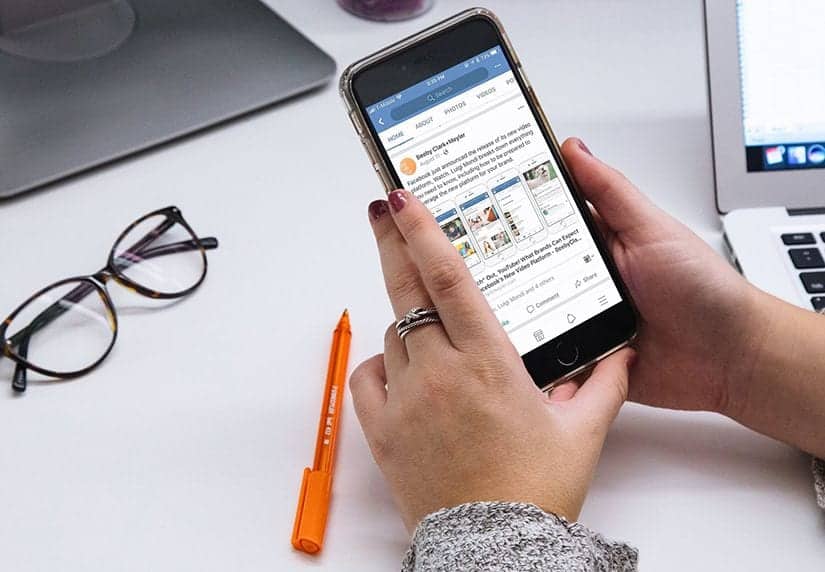Yes, You Can Measure the ROI of Social Media Influencers
From the apple-pushing snake of Adam & Eve to Leave it to Beaver’s Eddie Haskell, the world has been blessed with a rich lineage of influencers who...

 From how-tos on YouTube to brand discussions and shared photo content on Twitter and Facebook, consumers are quickly taking control of brands through user-generated content. But despite the recent boom in UGC, many brands are still afraid to invest in user-generated content marketing. Some may question the quality of these efforts or not understand how to scale them to meaningful levels, while others may be hesitant to trust consumers with their brand message. But by taking pains to guard their brand, marketers are missing out on a valuable opportunity to create a lasting impact and make a connection with their target audience.
From how-tos on YouTube to brand discussions and shared photo content on Twitter and Facebook, consumers are quickly taking control of brands through user-generated content. But despite the recent boom in UGC, many brands are still afraid to invest in user-generated content marketing. Some may question the quality of these efforts or not understand how to scale them to meaningful levels, while others may be hesitant to trust consumers with their brand message. But by taking pains to guard their brand, marketers are missing out on a valuable opportunity to create a lasting impact and make a connection with their target audience.
Below, I’ll address the three major issue issues holding brands back from user-generated content marketing, and why they shouldn’t be.
I. Marketers will not able to control their brands’ message.
You may not realize it, but consumers are already out there talking about your brand, so why not embrace it? On YouTube, UGC video outperforms branded content. For example, in the cosmetics world, of CoverGirl’s 251 million total views, 99% are from fan-created videos, while 99% of Revlon’s views also come from fan content.
Shopper behavior has changed, especially with millennials, where there is more of an expectation of having a closer relationship with a brand. Millennials, who tend to value people over brands, want a personal connection and in general are favorable to those brands that interact with them on social. Indeed, 84% of Millennials report that UGC on company websites has at least some influence on what they buy, compared to 70% of Boomers, according to a Bazaarvoice report, with 86% saying that user-generated content is generally a good indicator of the quality of a brand or service.
To channel this existing consumer enthusiasm for brand participation in a positive way, encourage people to interact with your product in a carefully controlled circumstance, such as a photo contest or monitored Twitter chat.
For example, in a recent effort for Skintimate shave gel, called Inspiration Nation, we asked consumers to submit photos and personal essays around a variety of branded UGC contests meant to inspire and motivate women, and tapped four online beauty influencers to create branded videos to help promote the programs, which included Make It Happen, Celebrate Your Independence, Inspire-a-Gram, and Inner Beauty. In the Inspire-a-gram sweepstakes, contestants were asked to showcase inspiring images of active, empowered legs with the hashtags #Inspire and #Skintimate for a chance to win Skintimate prizes, while Inner Beauty asked users to submit a photo of an inspirational woman in their lives by hashtagging #InnerBeauty #Skintimate. Entries were carefully monitored by the agency to ensure that UGC was on-brand and appropriate. By encouraging people to share their stories while involving the brand, Skintimate elicited very personal, detailed entries that eventually led to a significant lift in both brand awareness and purchase intent.
As an added bonus, the insights gained from UGC efforts can help inform your marketing strategy going forward. Pay attention to what people are saying around your brand to better understand and serve your audience. Ask questions. If you don’t tap into consumers for their insights, you may run the risk of alienating them. (Tropicana rebrand ring a bell for anyone?)
II. UGC is too difficult to generate.
Whether you’re looking to tap specific online influencers, or reach swathes of people to introduce your product to, there is a whole ecosystem of marketing partners that can help brands find UGC creators willing to work with them.
For online video, there are Multi-Channel Networks (MCN’s), such as Fullscreen or Maker Studios, that offer assistance in partnering brands with influencers. These networks are built on top of the YouTube platform, but are independent from Google/YouTube. Digital agencies such as BCM can help you in your search for the right influencer by researching and vetting potential influencers, and by acting as brand stewards.
Perhaps the most potent partners for creating UGC are Word of Mouth (WOM) companies that manage product sampling, reviews, and buzz generation among UGC creators. Crowdtap and BzzAgent lead the list. Crowdtap, which calls itself the “people-powered marketing platform,” empowers brand enthusiasts to have a direct say in the marketing process, such as providing feedback on products and marketing strategy and inviting them to share their own stories about the brands they love. Similarly, BzzAgent runs word-of-mouth networks that enlist unpaid volunteers to try products from companies, then share opinions about those products with others, in-person and online.
These programs benefit the brand as they help raise awareness and engagement for the product. Usually these programs also ask that the UGC creators give usage rights to the brand in return for free product. The brand benefits, as they are able to use the UGC in perpetuity.
For example, this past fall, Whirlpool used UGC to bring its “Every Day, care” campaign to life on a personal level. Core to the effort was elevating authentic, real-life examples of all the ways loved ones show each other they care. To help inspire people to share their own #EveryDayCare stories, Whirlpool partnered with Crowdtap to build and engage a community of more than 17,000consumers (called the #CareCrowd) within the platform. This community was used to surface stories and develop them into posts used in the brand’s own social channels and paid media, as well as content featured on a carefully curated and monitored campaign microsite.
III. UGC is too difficult to scale.
Thousands of product reviews and UGC photos and videos are created during any given WOM program, but it doesn’t have to end there. Agencies and WOM companies can help leverage this UGC for secondary or tertiary branded content, which is a very effective media strategy.
For example, in a recent Schick HydroSilk campaign, UGC reviews and photos from a WOM program were carefully vetted to create a compilation video that featured their new line of product, Sensitive Care. Creatively stunning, the compilation video was released on Facebook using their native video platform as a test, taking UGC to a new level for the brand, and resulting in a very high level of consumer engagement.
Meanwhile, with Inspiration Nation, BCM used the eight influencer videos created in the program to create a 30-second mashup ad that could be used as pre-roll or Facebook video. Such UGC efforts make for evergreen content that a brand can reuse for future efforts.
In a world where anyone can say anything about your brand with a push of a button, you can only benefit by making consumers your advocates. Authenticity is key, and using real people to share their stories around your brand helps amplify your message and create a new level of consumer engagement with your brand. So, what are you waiting for?

From the apple-pushing snake of Adam & Eve to Leave it to Beaver’s Eddie Haskell, the world has been blessed with a rich lineage of influencers who...

Nervous that your brand’s Facebook videos are not getting the attention you’d like? You should be. The hard fact is, you have exactly 2.5 seconds to...

Crowdsourcing is an emerging trend that is now starting to impact the traditional system of television and movie production with the increased...